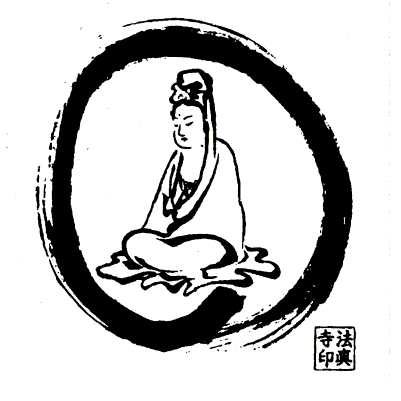
Spirit in Action
Ken Wilber
It
now seems apparent that there are at least four major inadequacies to the Great
Chain of Being as it was traditionally conceived, and in order to bring it
into the modern and postmodern world—and develop a truly integral approach—these
shortcomings need to be carefully addressed.
The first inadequacy,
as we saw, is that the four quadrants were very seldom differentiated on an adequate
scale. Thus, the great traditions rarely understood that states of consciousness
(Upper Left Quadrant) have correlates in the organic brain (Upper Right Quadrant),
a fact that has revolutionized our understanding of psychopharmacology, psychiatry,
and consciousness studies. Likewise, the traditions evidenced little understanding
that individual awareness (Upper Left) is profoundly molded by both its background
cultural worldviews (Lower Left) and the modes of techno-economic production (Lower
Right) in which it finds itself. This left the Great Chain open to devastating
critiques from the Enlightenment, from modern cognitive science, from neuropsychiatry,
and from postmodern cultural and historical studies, among others, all of which
demonstrated that consciousness is not merely a disembodied, transcendental noumenon,
but is deeply embedded in contexts of objective facts, cultural backgrounds, and
social structures. The Great Chain theorists had no believable response to these
charges (precisely because they were deficient in these areas).
As we
saw, each of the vertical levels of the Great Chain needs to be differentiated
into at least four horizontal dimensions (intentional, behavioral, cultural,
social). The Great Nest desperately needs to be modernized and postmodernized:
it needs to recognize the importance of cultural background, relativistic surface
structures and contexts, correlations with modern scientific discoveries, sensitivity
to minorities that
the mythic-agrarian structure often marginalized, the
importance of pluralistic voices, and so on. Only as body, mind, soul, and spirit
are differentiated into the Big Three can these objections be handled.
The second inadequacy is that the level of mind itself needs to be subdivided
in the light of its early development. Here the contributions of Western
psychology are decisive. To put it in a nutshell, the mind itself has at least
four major stages of growth:
- magic (2-5 years),
- mythic (6-11 years),
- rational (11 onward), and
- integral-aperspectival or vision-logic (adulthood, if then).
Precisely
because the infantile and childish origins of the preformal levels of magic
and mythic were not clearly understood, the traditions often confused them with
the postformal states of psychic and subtle, and this pre/post fallacy
haunts most of the perennial philosophy, injecting it not only with truly
enlightened wisdom, but substantial stretches of superstition.
The third
inadequacy: Because the traditional Great Chain theorists had a poor understanding
of the early, infantile, prerational stages of human development, they likewise
failed to grasp the types of psychopathologies that often stem from complications
at these early stages. In particular,
- psychosis,
- borderline, and
- neurotic diseases
often
stem from problems at the early fulcrums of self-development, and can best be
approached with an understanding of their developmental dimensions.
Meditation—which is a way to carry development forward into the transpersonal—will
not, as a rule, cure these prepersonal lesions (as hosts of American practitioners
found out the hard way).
The fourth inadequacy in the traditional
Great Chain is its lack of understanding of evolution, an understanding
that is also a rather exclusive contribution of the modern West. This is easily
remedied, because, as many theorists have pointed out, if you tilt the Great Chain
on its side and let it unfold in time—instead of being statically given all
at once, as traditionally thought—you have the outlines of evolution itself.
Plotinus temporalized = evolution.
In other words, evolution to date—starting
with the Big Bang—has unfolded approximately three-fifths of the Great Chain—matter,
sensation, perception, impulse, image, symbol, concept, rule, and formal, in essentially
the order suggested by the Great Nest. All that is required is to see that the
Great Chain does not exist fully given and statically unchanging, but rather evolves
or develops over great periods of time. And the fact is, despite the bluff of
Western biologists, nobody really understands how higher stages emerge in evolution—unless
we assume it is via Eros, or Spirit-in-action.
This also means, as I
have often pointed out, that what the perennial philosophy took to be eternally
unchanging archetypes can better be understood as formative habits of evolution,
“Kosmic memories,” as it were, and not pregiven molds into which the
world is poured? This dynamic orientation can bring the Great Nest of Being more
into accord with evolutionary thinkers from Peirce to Sheldrake to Kaufmann, and
it is a view that is definitely implicit in Great Nest theorists from Plotinus
to Asanga and Vasubandhu.
The point is that, once the Great Nest is
plugged into an evolutionary and developmental view, it can happily
coexist with much of the God of the modern West, namely, evolution. Moreover,
it raises the stunning possibility: if evolution has thus far unfolded the first
three-fifths of the Great Nest, isn't it likely that it will continue in the
coming years and unfold the higher two-fifths? If that is so, God lies down
the road, not up it; Spirit is found by going forward, not backward; the Garden
of Eden lies in our future, not our past.
From:
Ken Wilber
Integral Psychology:
Consciousness, Spirit, Psychology, Therapy
Boston & London: Shambhala, 2000
Chapter 12: Sociocultural Evolution
Pp. 143-145
Lees ook van Ken Wilber Wie ben ik? uit zijn vroege werk Zonder grenzen.